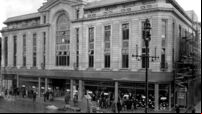Throwback Thursday: A city of steps... but which are steepest?

Water flowing down the Fever Hospital steps after a burst water main - Cork is a city of many steps, especially on the northside, says Jo Kerrigan.
So where are the steepest steps of all in Cork city? The longest? And who re coming home upriver on the Innisfallen and ing Blackrock Castle?

“I was an antiquarian bookseller in Cork since 1964, and published under the name Fercor Press, short for Feehan, Cork. We launched it with the then Lord Mayor Pearce Wyse in Silversprings.

The one of Blackrock Castle above is particularly poignant because it actually links to that other story above, of the steps leading down from above the railway station to the quayside level below.







